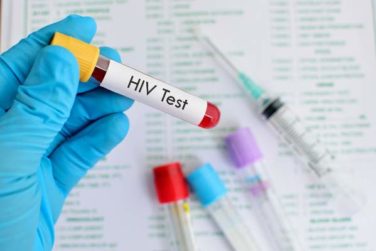AT THE INTERNATIONAL STROKE CONFERENCE
HOUSTON (FRONTLINE MEDICAL NEWS) – Hemorrhagic stroke sharply increases the risk of new-onset depression which, in turn, is associated with a 30% increased risk of dementia within 5 years.
New-onset depression developed in 40% of intracerebral hemorrhage survivors in a large prospective study, Alessandro Biffi, MD, said at the International Stroke Conference sponsored by the American Heart Association. By the end of 5 years, 80% of these patients had developed some form of dementia.
Dr. Biffi’s study showed that the events were temporally linked, with the peak dementia onset occurring about 1.5 years after the peak depression onset.
“This is of great importance from a research and clinical standpoint, as it may represent a marker of ongoing cognitive deterioration,” said Dr. Biffi of Massachusetts General Hospital, Boston.
A number of studies have found that survivors of intracerebral hemorrhage (ICH) face a significantly increased risk of mood disorders and cognitive decline. “There is probably a link between mood disorders and cognition after ICH, as is the case for a number of other neurological conditions,” Dr. Biffi said. “Cerebrovascular small-vessel disease is likely to be involved in the underlying pathogenesis for these disorders, as it is also a risk factor for late-life depression in the general population. Therefore, depression and dementia after ICH may share some etiological connections.”
He and his colleagues enrolled 695 patients who had experienced an ICH and followed them for a mean of 5 years. None of the subjects had ever been diagnosed with a mood disorder or cognitive decline. The subjects were interviewed by telephone every 6 months.
At baseline, investigators collected CT and MRI imaging data, epidemiologic exposure data, and apolipoprotein E4 genotype. The outcomes were new-onset depression and incident dementia.
At baseline, subjects were a mean of 74 years old. About 70% had hypertension and 15% had heart disease. Less than 1% of the cohort was positive for the APOE e4 gene. Imaging-confirmed white matter disease was present in 65%.
Over the follow-up period, new-onset depression developed in 278 (40%). The temporal incidence of this was consistent, at about 7% per year.
Two baseline characteristics were significantly associated with new-onset depression. These included having more than a single copy of the APOE e4 allele (hazard ratio, 1.7) and the presence of white matter disease (HR, 1.82), Dr. Biffi reported.
Having had at least 10 years of school was protective against depression (HR, 0.75), as was functional independence (HR, 0.52).
By the end of the follow-up period, dementia had developed in 80% of those with depression (220). In 81% of cases, depression preceded dementia, with an average time lag of 1.5 years, he noted.
In a multivariate analysis, several factors were significantly associated with incident dementia. Higher education reduced the risk by 40% (HR, 0.60). Factors that increased the risk of dementia were black race (HR, 1.48), carrying the APOE e4 gene (HR, 2.12), presence of white matter disease (HR, 1.7), and poststroke new-onset depression (HR, 1.29).
The study shows only association, Dr. Biffi cautioned. “No causal relationship can be inferred by this study. We also can’t capture the severity of the mood symptoms, and we are unable to examine the relationship between cognition and apathy, which is another highly relevant neuropsychiatric manifestation of small-vessel disease.”
He had no financial disclosures.
On Twitter @alz_gal




